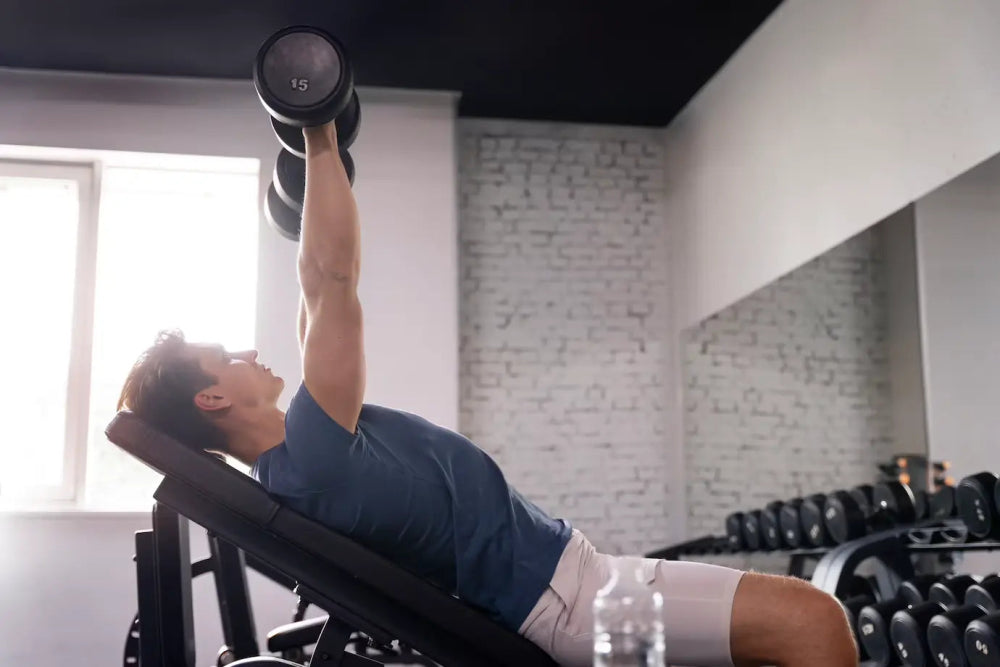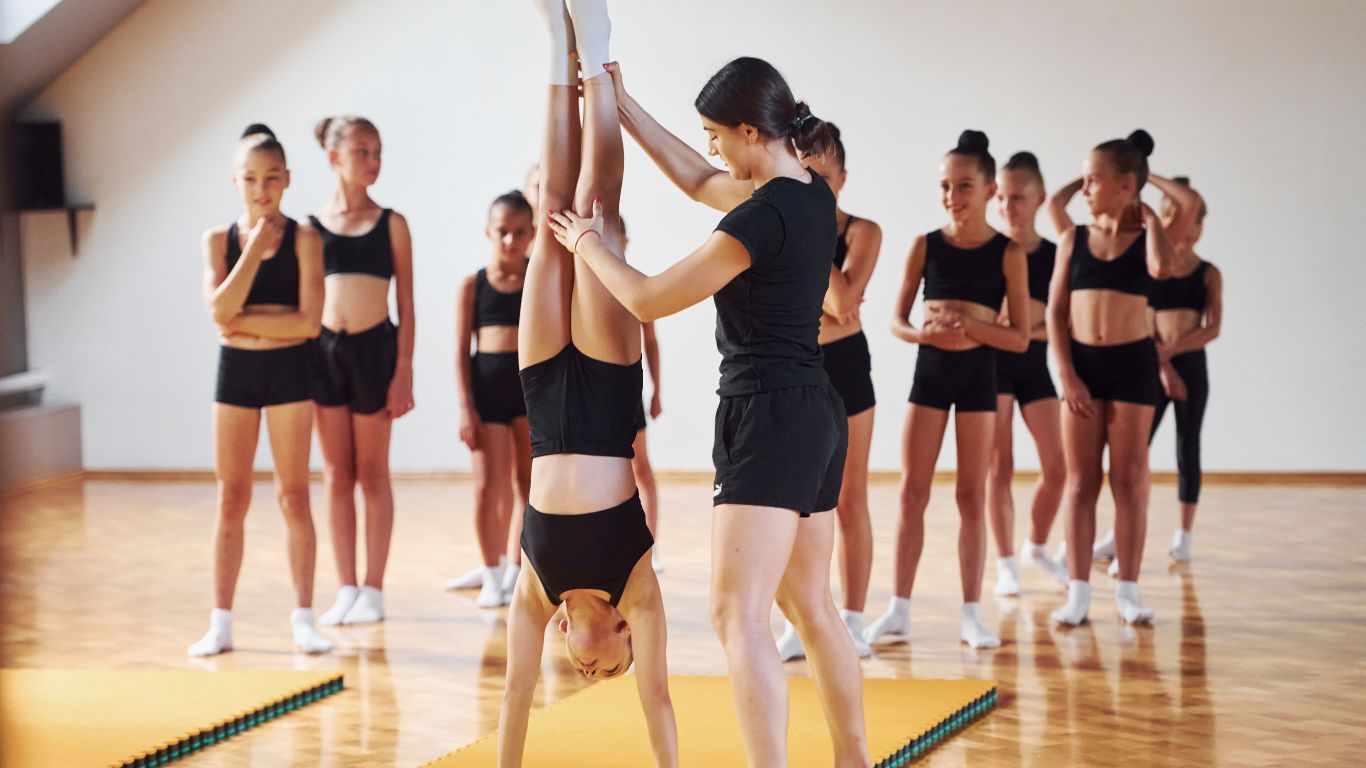Gymnastic grips are essential fitness gear. They safeguard athletes’ hands from blisters and calluses during their workouts.
Committed to fitness or a professional athlete, everyone needs reliable gymnastic grips. They are not just another accessory; these pieces of equipment provide increased safety and improved performance in the studio, box, or gym. Mastering grip strength can take your conditioning to new height, and to achieve that, the role of gymnastic grips is undeniable.
Made from durable materials such as leather, these grips are designed to offer comfort, protection, and enhancement of performance in exercises like pull-ups, kettlebell swings, and deadlifts. Embracing a good pair of gymnastic grips can also enhance endurance levels and avoid potential injuries. Understanding their value and incorporating them into fitness routines is a game-changer. Regardless of the type of workouts, gymnastic grips help build confidence while promoting safety, measuring up to the demanding dynamics of varied fitness routines.
History And Evolution Of Gymnastic Grips
Gymnastic grips have evolved significantly over time. This piece of equipment, vital for gymnasts, has a long, fascinating history. Understanding its historical context provides an intriguing look at how gymnastics has changed and advanced.
From Chalk To Leather: The Origins
The early use of chalk was for grip improvement. Athletes believed it reduced sweat and improved their hold on equipment.
- The gia1cln and chalking technique existed since the inception of gymnastics.
- Eventually, chalk was replaced by leather grips designed for wrist protection and enhanced grasp.
- The first gymnastic grips were simplistic, created out of necessary safety, while the modern ones are extensively developed and enhanced.
Modern Designs And Their Impact On Gymnastics
Modern gymnastic grips have revolutionised the sport. They now offer better performance, safety, and style.
- Modern designs consist of advanced materials like high-quality leather and Velcro.
- They provide exceptional grip strength and drastically reduce hand fatigue.
- These grips enhance performance by making it easier to perform routines.
- New designs even incorporate fashion elements, reflecting the personal style of gymnasts.
The evolution of gymnastic grips demonstrates the constant drive to advance the sport. Modern grips have proven to be a game-changer, promoting safety and improving performances exponentially.
Different Types Of Grips
Getting the right grip on the gymnastic bars is crucial for any gymnastic enthusiast or professional. The type of grip can have a profound impact on the comfort, skill execution, and overall performance. The grip you choose depends on various factors like finger holes, material, wrist support, and personal preference. In this blog, we discuss the different types of grips every gymnast needs to know.
Finger Holes: Variations And Personal Preferences
When it comes to finger holes, gymnastic grips are not one size fits all. Finger hole size, shape, and placement all make a significant difference. Here are some factors you might consider:
- Size: Finger hole size should match your finger size.
- Shape: Square, round, or oval? Choose what works best for you. The wrong shape could cause discomfort.
- Placement: The spacing between holes should reflect your fingers’ natural spread on the bar.
Material Matters: Leather, Synthetic, And Velcro
Gymnastic grips come in an array of materials, all offering different strengths and drawbacks. Here are some details on the most popular materials used:
| Material | Features | Benefits | Drawbacks |
|---|---|---|---|
| Leather | Strong, durable material | Excellent grip; lasts long | Requires more maintenance |
| Synthetic | Man-made; often includes nylon elements | More affordable; easy maintenance | Less grip than leather; wears out faster |
| Velcro | Fastening system; often used with other materials | Secure fit; easy adjustment | Loses strength over time; might scratch skin |
Choosing The Right Grip
Gymnastic grips play a crucial role in a gymnast’s performance. Picking the right grip can elevate your skills to a new level. Here, we will discuss the factors you must consider.
Size And Fit: Ensuring Maximum Comfort And Performance
Find the perfect gym grip size is crucial. Here’s why:
- A grip that fits well makes gymnastics easier.
- Small grips can cause blisters.
- Large grips could slip, causing accidents.
Measure your hand from the base to the tip of your middle finger. Use this measure to pick the right size.
Discipline-specific Grips: Rhythmic Vs. Artistic Gymnastics
| Gymnastic Discipline | Type of Grips |
|---|---|
| Rhythmic Gymnastics | No grips are used. Gymnasts rely on skill and hand strength |
| Artistic Gymnastics | Grips are vital. They protect hands and enhance performance |
Decide based on your style. Each discipline requires a different type of grip.

Credit: gripzilla.co
Maintenance And Care For Longevity
Maintenance and care for your gymnastic grips ensure they last longer and perform better. A grip that’s well taken care of provides reliable protection and optimal performance during every routine. Here’s how to keep your grips in top condition.
Cleaning Techniques: Keeping Your Grips In Top Shape
Regular cleaning is crucial to maintain the integrity of your grips.
- Use a soft brush or cloth to remove chalk and debris after each use.
- Avoid using water, as it can weaken the leather.
- Spot clean with a mild disinfectant to keep them hygienic.
Storage Solutions To Prevent Wear And Tear
Proper storage guards your grips against damage and premature wear.
- Hang grips to maintain shape and prevent creasing.
- Avoid storing in a bag where they can get crushed.
- Store in a cool, dry place away from direct sunlight to prevent drying out.
Techniques For Enhancing Grip Performance
Gripping the bars right during gymnastics is key to a stellar performance. Strong and reliable grips can save you from slips and injuries. It pays to know a few techniques that help improve your grip performance. A firm grip ensures you can swing, catch, and perform with confidence. From breaking in new grips to mastering chalk application, let’s dive into how to elevate your grip game.
Breaking In New Grips For Optimal Use
Getting new grips ready is like breaking in a new pair of shoes.
- Stretch and flex the grips for a snug fit.
- Use them during practice for shorter sessions first.
- Adjust the wrist straps for comfort and security.
- Work the leather by bending and shaping it to your hand.
These steps help the grips mold to your hand shape, providing better control.
Chalk Application Tips For Better Adhesion
Using chalk is an art. Apply it right for improved grip strength.
- Cover your hands with an even layer of chalk.
- Dust the grips to remove excess powder.
- Apply chalk to both sides of the grips for extra friction.
- Reapply chalk regularly during practice and competition.
The right amount of chalk can prevent sweaty hands from slipping and help you stay on the bars.
Preventing Injuries With Proper Grips
Preventing Injuries with Proper Grips is more than essential for any gymnast out there. It’s a crucial step in staying healthy while performing your best. By paying attention to grip technique and safety, common injuries associated with incorrect grip use can be easily avoided.
Common Gripping Errors And Their Consequences
We often overlook the significance of grip technique’s role in gymnastics. However, missteps in this area can have far-reaching effects. Here’s a quick look at some common gripping mistakes and their potential consequences:
| Common Gripping Errors | Consequences |
|---|---|
| Using grips that are too big or small | Strained wrists and hands |
| Not changing grips when worn out | Slippery hands leading to falls |
| Gripping too hard | Blistered and calloused hands |
| Incorrect wrist position | Wrist sprains and strains |
Implementing Safe Practice Through Correct Grip Use
Let’s move away from common mistakes and focus on correct grip use. Implement these tips to help prevent injuries:
- Choose the right size: Grasping the bar with a well-fitted grip supports hand stability.
- Replace worn-out grips: Old, worn grips might become slippery and present a fall risk.
- Moderate your grip strength: A grip that’s neither too tight nor too loose can prevent blisters and calluses.
- Correct wrist position: Keep wrists straight for comfort and to reduce the strain.
Remember: The goal is to keep yourself injury-free. So, don’t overlook the importance of proper grips in gymnastics!
Expert Opinions And Gymnast Testimonials
The sport of gymnastics holds immense value and is incomplete without one crucial gear – gymnastic grips. But how can we select the finest grips? What are the experiences of expert gymnasts? Let’s delve into this fascinating context.
Professional Insights On Grip Selection
Seasoned gymnasts and coaches stress the importance of the right grip. Comfort, fit, and durability remain at the heart of a great selection.
- Comfort: According to top-notch gymnasts, comfortable grips enhance performance. The material should feel right against the hands.
- Fit: Good grips must have a perfect fit. Gymnasts advocate that ill-fitting grips can reduce control and cause a drop in performance.
- Durability: Experts emphasize that long-lasting grips save time, money, and potential injuries. Thus, choosing durable grips is a smart choice.
Real-life Success Stories And Grips Recommendations
Many gymnasts attribute their success to their grip choices. Let’s explore their stories and recommendations.
| Name | Success Story | Recommended Grip |
|---|---|---|
| Olivia | Olivia, an Olympic gymnast, made a significant switch to her grips midway through her career. This change led to an enhanced performance, contributing to her winning numerous medals. | “X Factor Grips” served her best due to their optimal comfort level and sturdiness. |
| Michael | Michael’s journey from a junior gymnast to a professional was marked with grip-related injuries. By choosing a more durable grip, he was able to bounce back stronger and go on to clinch top honors. | He vouches for the “Ever Lasting Grip” for its remarkable durability. |
These striking examples highlight the importance of selecting the right grips. Remember, a grip that delivers comfort, a perfect fit, and durability will carry you to the pinnacle of gymnastic success.

Credit: www.amazon.com

Credit: www.getphysical.com
Frequently Asked Questions For Gymnastic Grips
What Are Gymnastics Grips Called?
Gymnastics grips, often designed to increase a performer’s hold on gymnastic apparatus, are named dowel grips. These grips ensure a firm grip, thereby reducing the risk of slips and injuries.
Are Gymnastics Grips Worth It?
Yes, gymnastics grips are worth it; they enhance grip, reduce hand blistering, and improve performance on apparatus like bars.
Why Do Gymnasts Put Rubber Bands On Their Grips?
Gymnasts use rubber bands on grips to secure them, prevent shifting, and provide consistent hand placement. This enhances grip stability, safety, and performance on apparatuses.
How Do You Make Homemade Gymnastics Grips?
Making homemade gymnastics grips involves cutting out leather into loops that fit your hand size. Ensure to pierce holes at the tops. Then, insert dowel rods through the holes for grip support. Secure the grips with sports tape around your wrists.
Always prioritize fitting and comfort.
Conclusion
Gymnastic grips provide safety, comfort, and improved performance, making them an essential investment for gymnasts. They help prevent injuries and contribute to powerful routines. Don’t overlook these handy aids; make your gymnastics journey safer and more efficient with the right grips.








